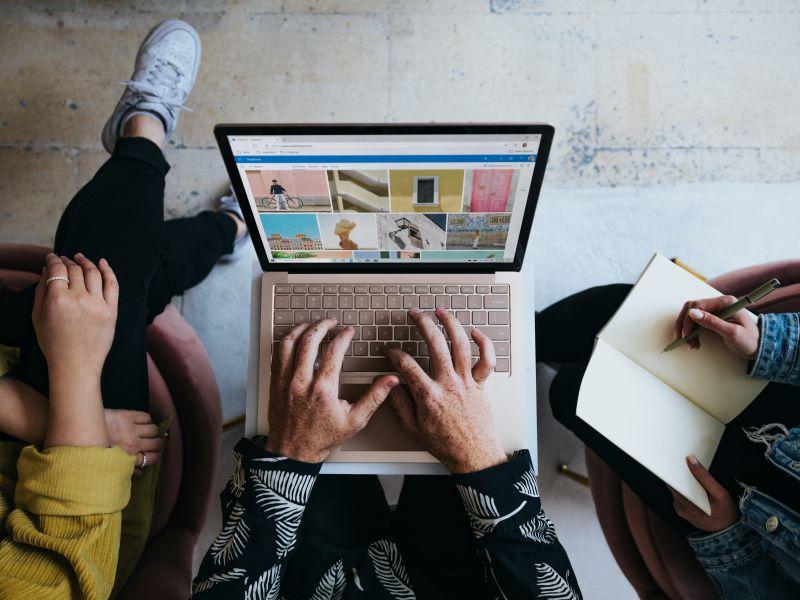An effective way of supporting students as they’re learning through discussion is to embed the discussion process within a collaborative learning task. So that this gives them a practical task they have to do together, even though they’re all online.
Yasemin Allsop also works through a detailed description of how to help her teacher training students prepare for teaching primary school children about coding. Her focus is on how to use the Scratch tool for children to make digital animations.
[Allsop speaks] “So when the green flag clicked, I want this character to move 10 steps. How do I test it? I say, ‘When the green flag clicks, so there we go.’ I click on the green flag. Can you see how small, how short [a] distance is that? And we can then maybe use repeat to make character move more right.
“And what we don’t want is, we don’t want this character to disappear from the screen. So what we say is ‘If you reach the edge, bounce back’, because we don’t want it to disappear, right? And we also want this character to start from the same position every time we click on the green flag. For that, we need to tell the character to go to a specific position, and we use for that coordinates, minus 34 minus 17. That means every time I click on the green flag, my sprite, it’s going to start, it’s going to place itself in this spot, in these coordinates. Let’s see, can you see? Perfect.
“Have fun with it, just think like children, because they really enjoy using this application, this program. And see if you can go through the same learning process, just like children and, you know, just have fun with it.” [Allsop stops speaking]
Scott Hayden has to work entirely online to prepare students for doing their practical work, and so he prepares them for using collaborative, real-time, synchronous CAD tools, or computer-aided design tools, when they’re all having to work online together.
[Hayden speaks] “Using animations and dynamic, engaging visuals helps our students to prepare for practical work when they cannot physically be in to be hands-on, with the practical element of their learning experience. Using collaborative real-time, synchronous CAD tools such as this can help our students to learn the rhythm, the process, the beginning, middle and end of processes and approaches to the more hands-on aspects of their vocational courses.” [Hayden stops speaking]
And for this final example, we see how Caron Mulligan wanted to help students through the isolation when they were working at home. So she gave them the opportunity of work with other students and participate in a peer assessment process, so they were able to come together.
This is an example from their religious studies course, where Year Seven students watched a little video first and then were asked to use PowerPoint to create their own presentation on sacred buildings, and then they used MS Teams to do the peer assessment process.
[Mulligan speaks] “They were instructed on how to add a new slide, insert their name, photograph and then add text boxes and arrows to annotate their model to explain its features: [Mulligan stops speaking]
[Instructor speaks] “Just leave it nice and blank, I’m going to make our picture big so that people can see what we’ve done. But what I’d also like you to do as well as having a photograph, it’s also going to have some explanations of, like, what you did and why you did it that way.
“So perhaps you could explain why you included a particular room, or why use that material or perhaps why that design, that part of the design is important for your sacred building?” [Instructor stops speaking]
So this is a great example of how creative students can be with the right digital tools. Look at what they did.
[Mulligan speaks] “And the results from one of my groups looked like this. So you can see they really successfully added models, and their photographs of them, and a range of different materials were used and a range of different outcomes.” [Mulligan stops speaking]
And then exactly the same approach was used across the whole school in other curriculum areas as well.
That’s what’s so exciting about sharing pedagogies and learning designs; they can transfer across subject areas and even sometimes age groups as well, and that’s what we’ve been testing on this course. Does that really work for teachers? That’s what we need to find out.
Diana Laurillard is a professor of learning with digital technologies at the UCL Knowledge Lab, University College London, and one of the creators of the FutureLearn Blended and Online Learning Design course.




comment